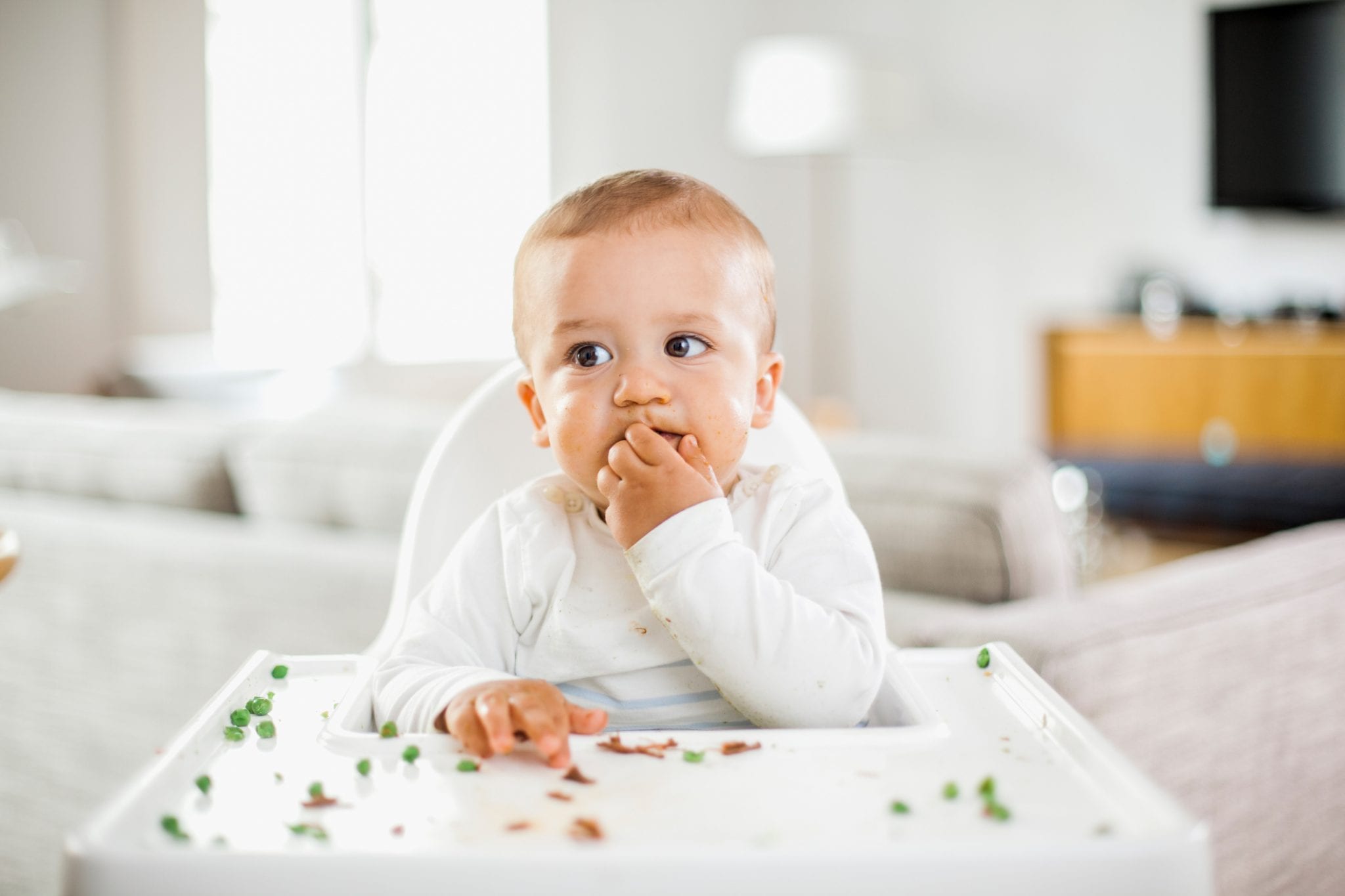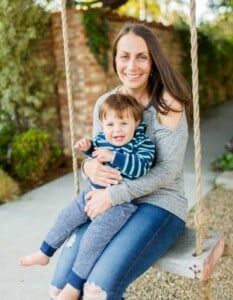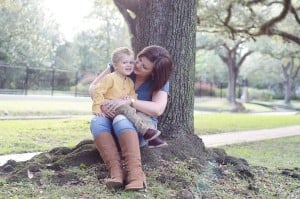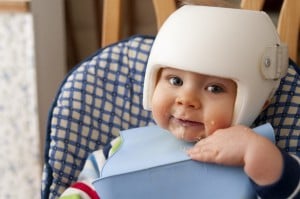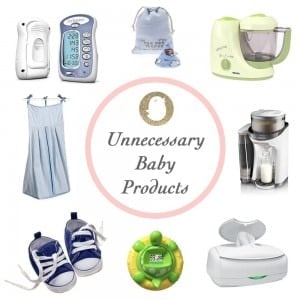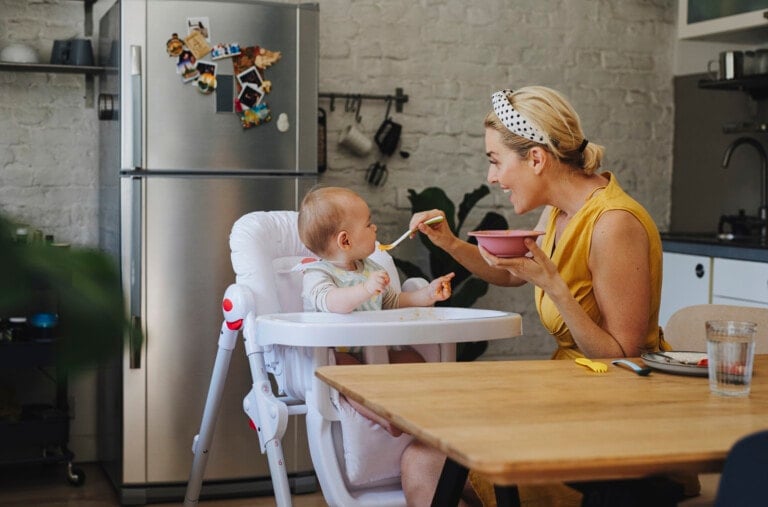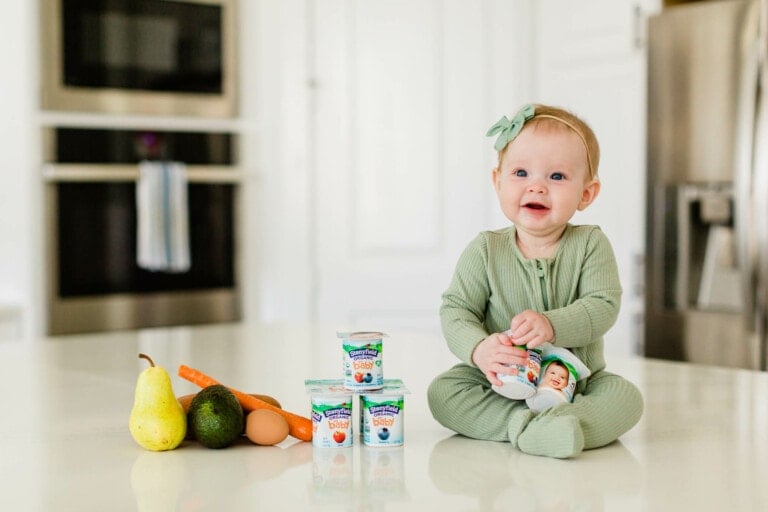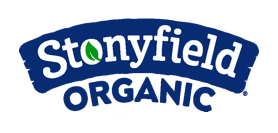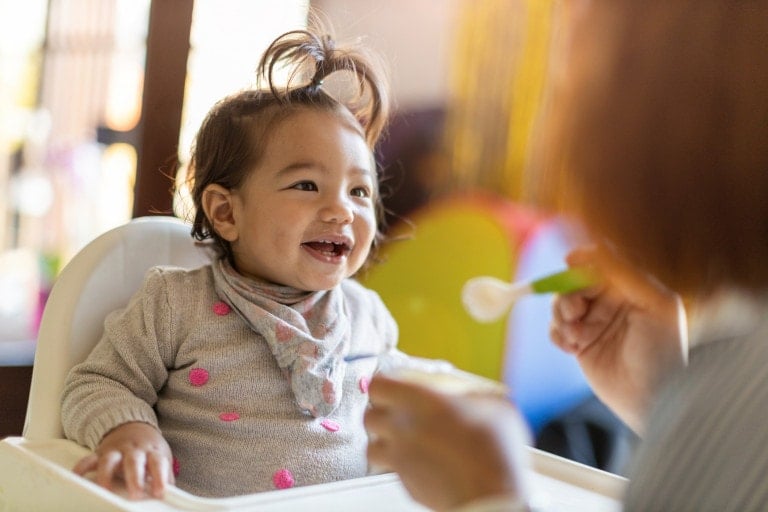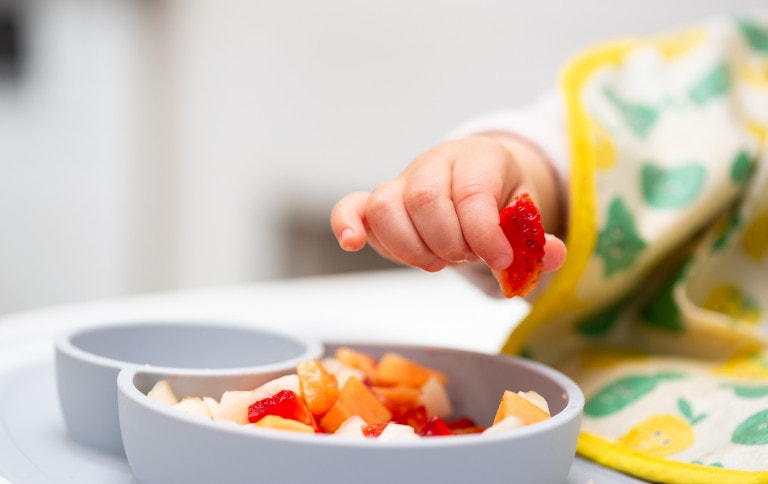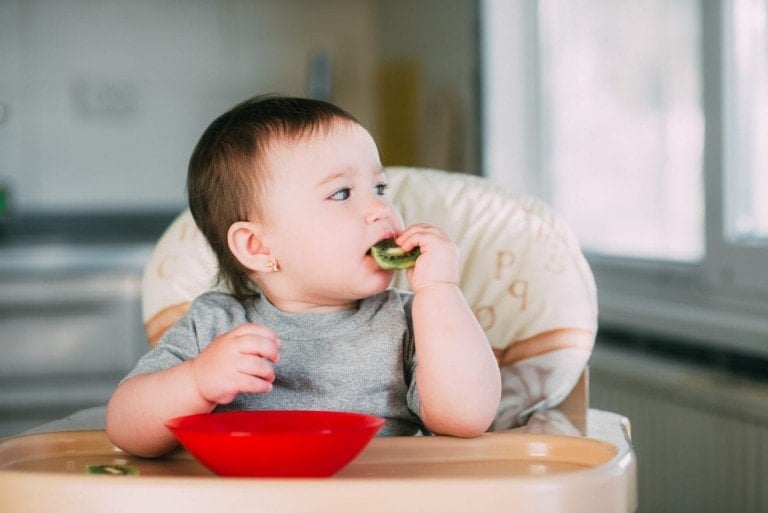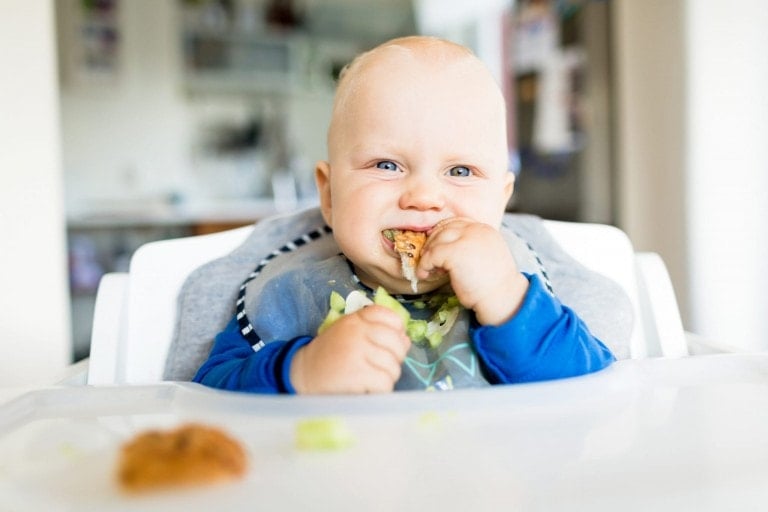Look for Readiness Signs:
With baby-led weaning (BLW), solids are introduced at any point after six months of age when babies demonstrate readiness and interest. Some babies may seem ready before six months, and others not until 7-8 months. True readiness signs include: sitting up with little or no support, reaching out to grab things and taking them to the mouth quickly and accurately, and gnawing on toys and making chewing movements; however, the very best sign is when a baby starts to put food in his mouth himself when provided the opportunity (Rapley & Murkett, 8-9).
When should I feed my baby?
Contrary to what some pediatricians and family members may say, it is best to offer your baby solids when he’s not hungry. Breast milk or formula is still his main food source and should be offered before meals. For example, when my son was still breastfeeding and in his first few months of BLW, he had breakfast and lunch about an hour after his 7 am and 11 am milk feedings, respectively. Why is this? If a baby lacks the skills to feed himself or eat the food in front of him, sitting down to eat solids while hungry can be very frustrating and create a negative association with food. Conversely, if he has had a recent milk feeding, he will be satisfied, comfortable, and able to explore and enjoy solids.
When my son started baby-led weaning, we offered one meal (dinner) in his 6th month, a second meal (lunch) in his 7th month, and then a third meal (breakfast) in his 8th month. This slow approach worked very well for us. As my Mommy and Me teacher says, “Why do three meals a day before you really have to?” Adding solids into your baby’s daily routine is definitely more work, and it can be tricky fitting multiple meals in between 2-3 naps and other activities. Since babies don’t need solids initially, starting with three meals a day isn’t necessary. However, as with everything related to parenting, there is no one right way. Some people, including several close friends, immediately start with 2-3 meals a day. It’s your call on how to pace yourself and your baby with BLW!
What should I feed my baby?
There is absolutely no need to limit the variety of food given to your baby! He can have any food except honey (due to the risk of botulism1) before he is one year old. Just make sure his food is fresh, nutritious, unprocessed, and without added salt or sugar. What is wrong with added salt and sugar? Sugar is bad in general, as it only offers empty calories and can damage teeth. Additionally, babies’ bodies cannot tolerate more than tiny amounts of salt because their developing kidneys cannot process it; babies should not have more than one gram of salt (0.4 grams of sodium) per day.
What about food allergies?
If you have a family history of certain food allergies, you may want to consider limiting those specific allergenic foods. However, keep in mind that a great deal of recent research shows that early exposure to allergenic foods often decreases the incidence of allergies.2 Accordingly, it could be worthwhile to expose your baby to any possible allergenic foods to see what happens. Always consult your doctor or nutritionist, of course.
Make your baby’s food interesting and flavorful with different herbs, oils, and seasonings! My son has tasted and enjoyed a plethora of flavors since he started BLW. I’ve used garlic powder, ground ginger, ground coriander, and cumin; his absolute favorite is cinnamon. Fresh and dried herbs like basil, mint, Italian seasoning and parsley are great additions and oils such as coconut, olive, sesame, peanut, and vegetable.













